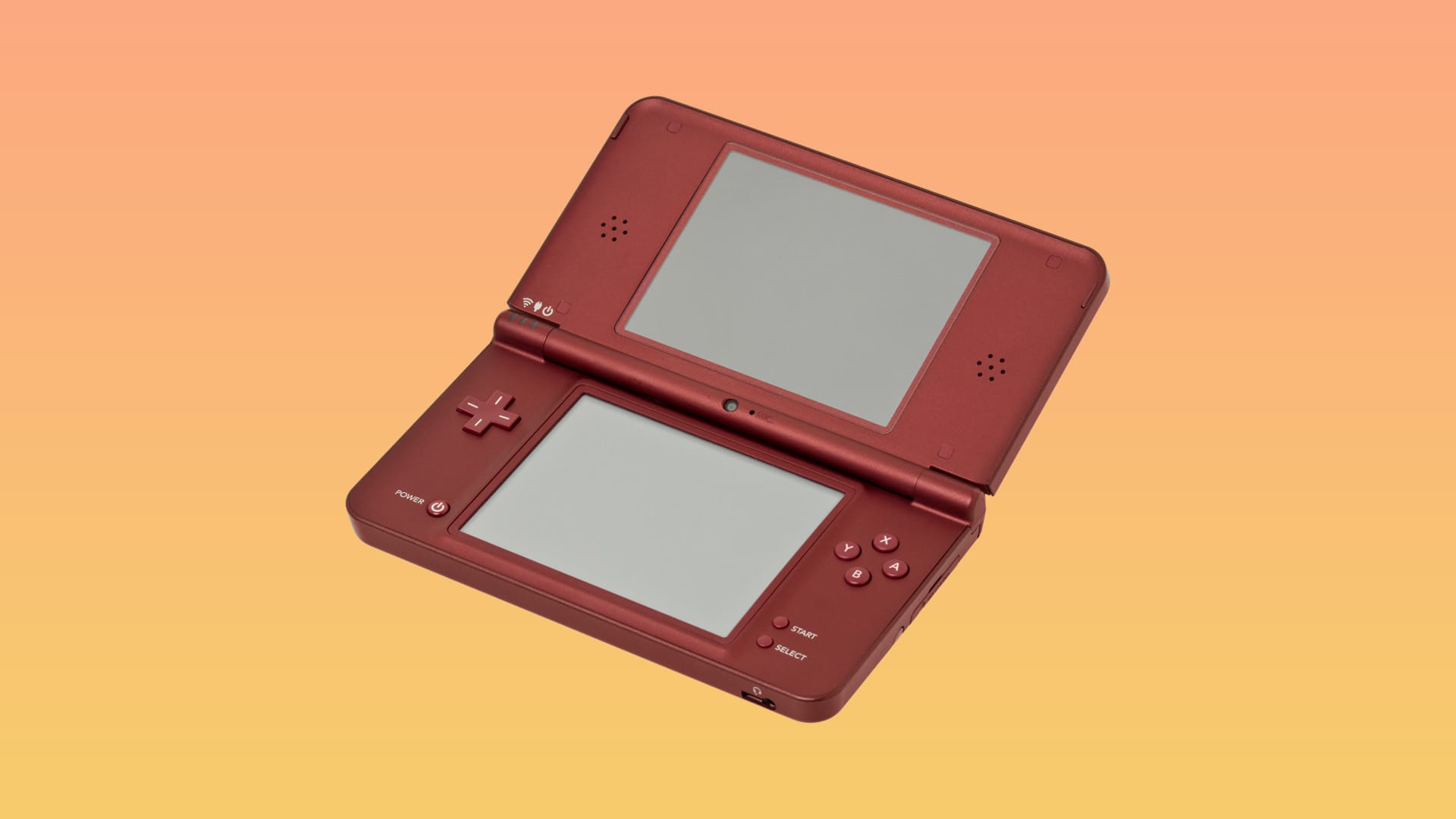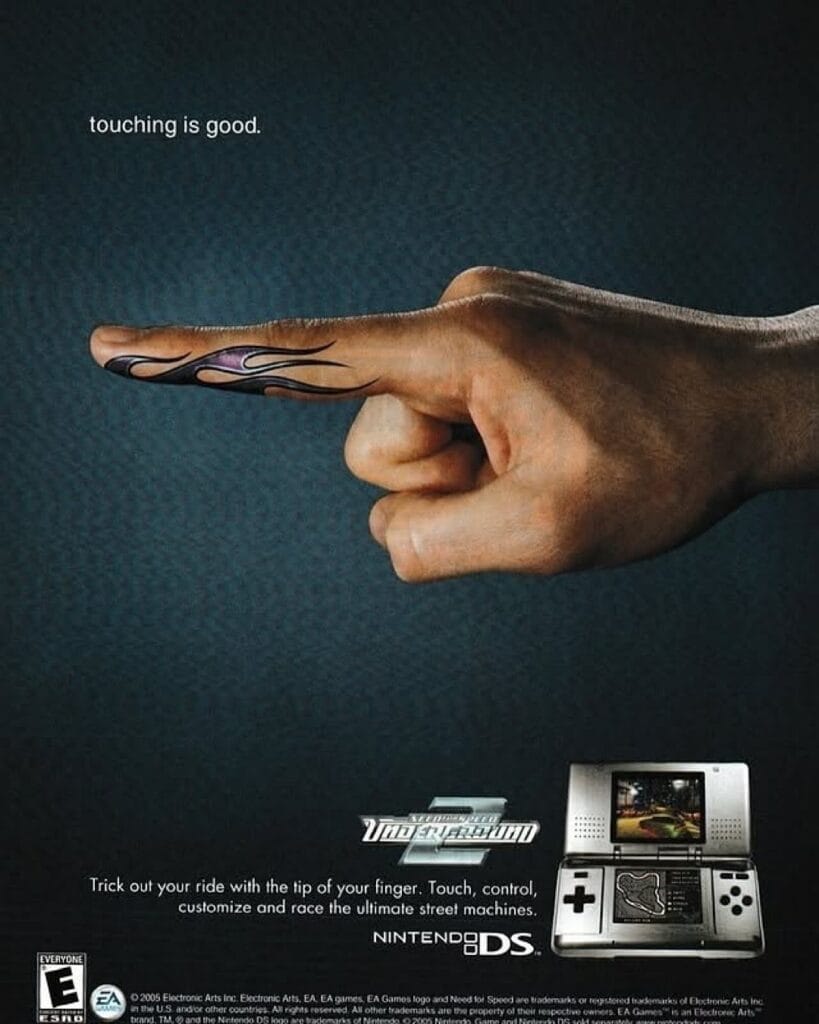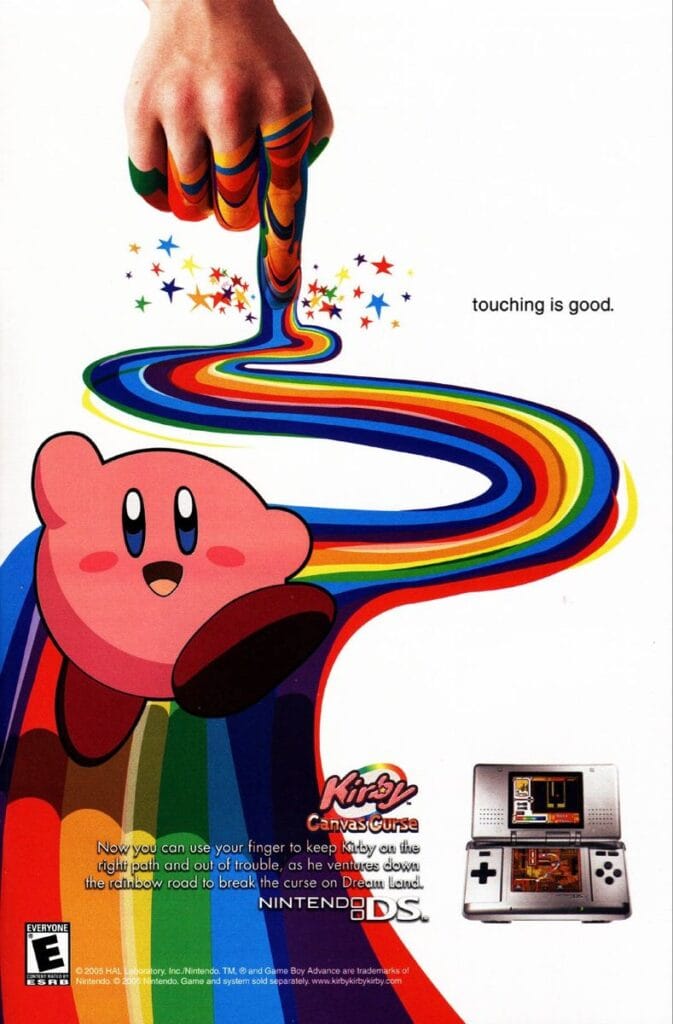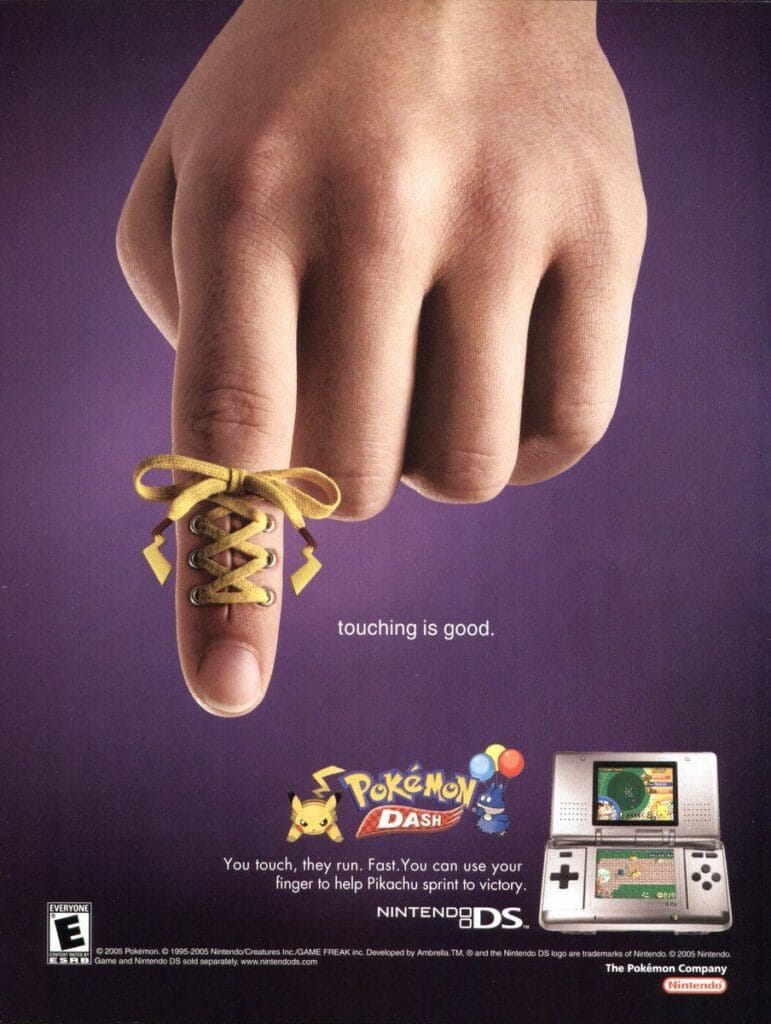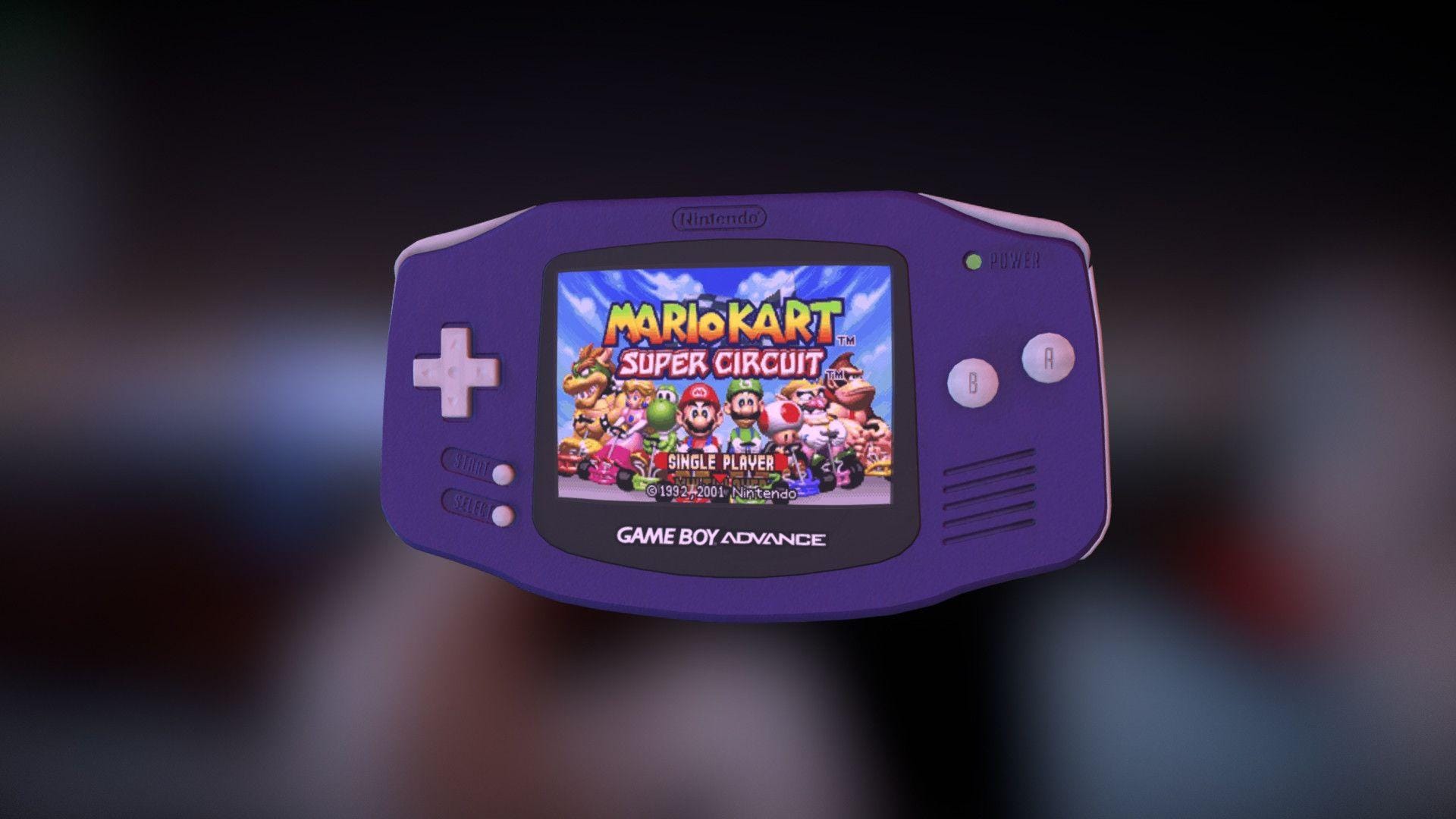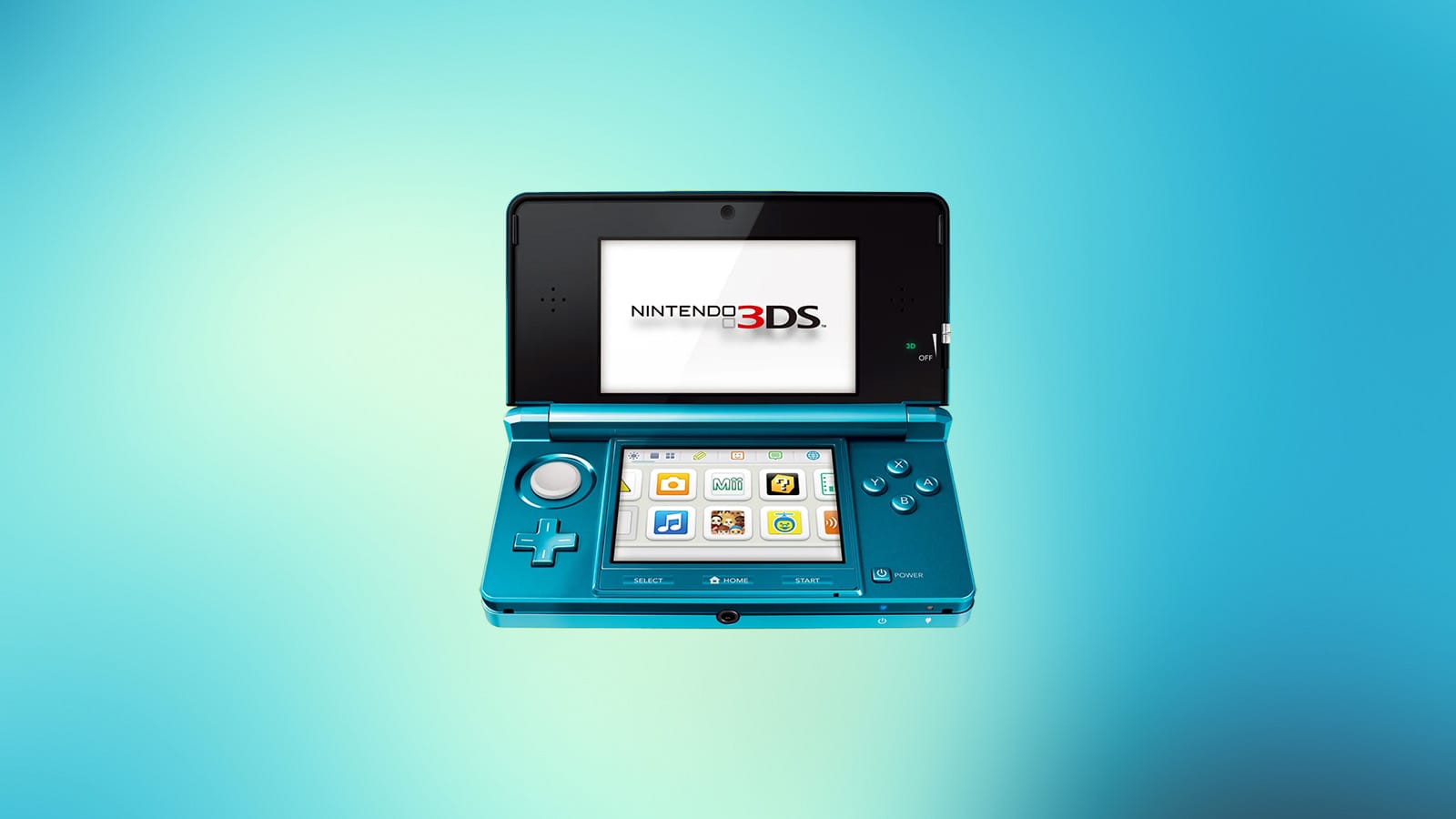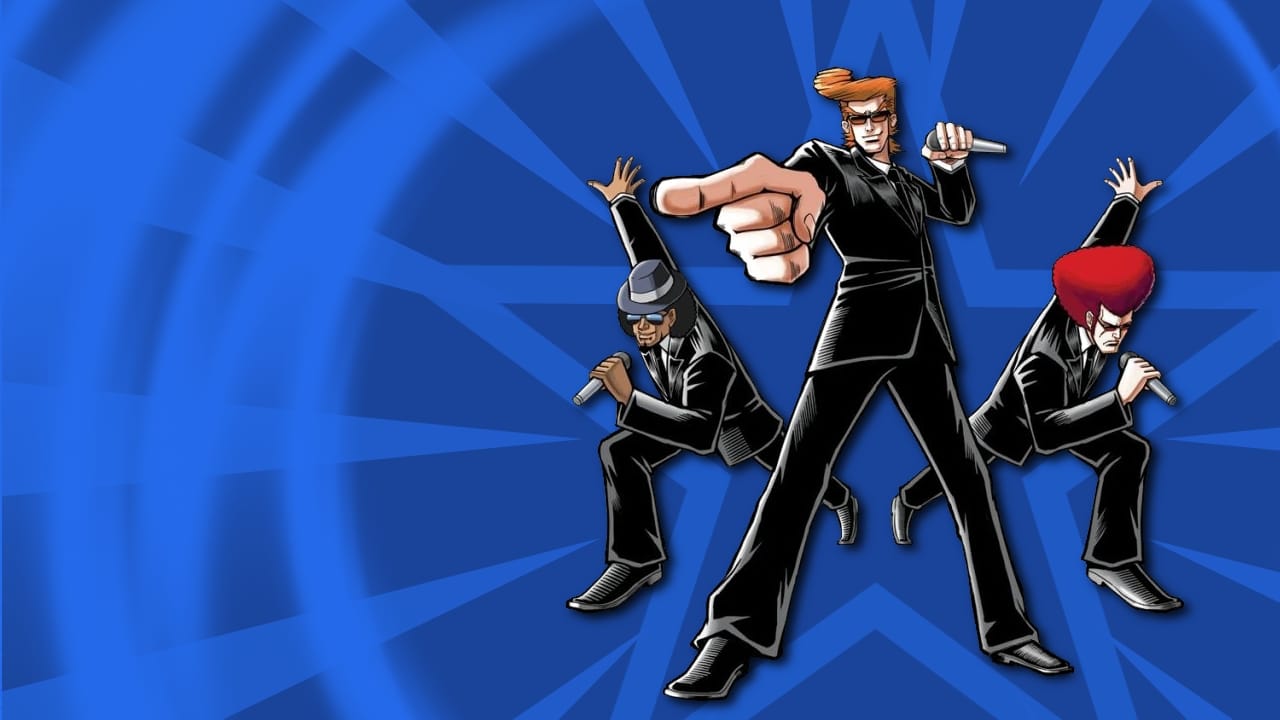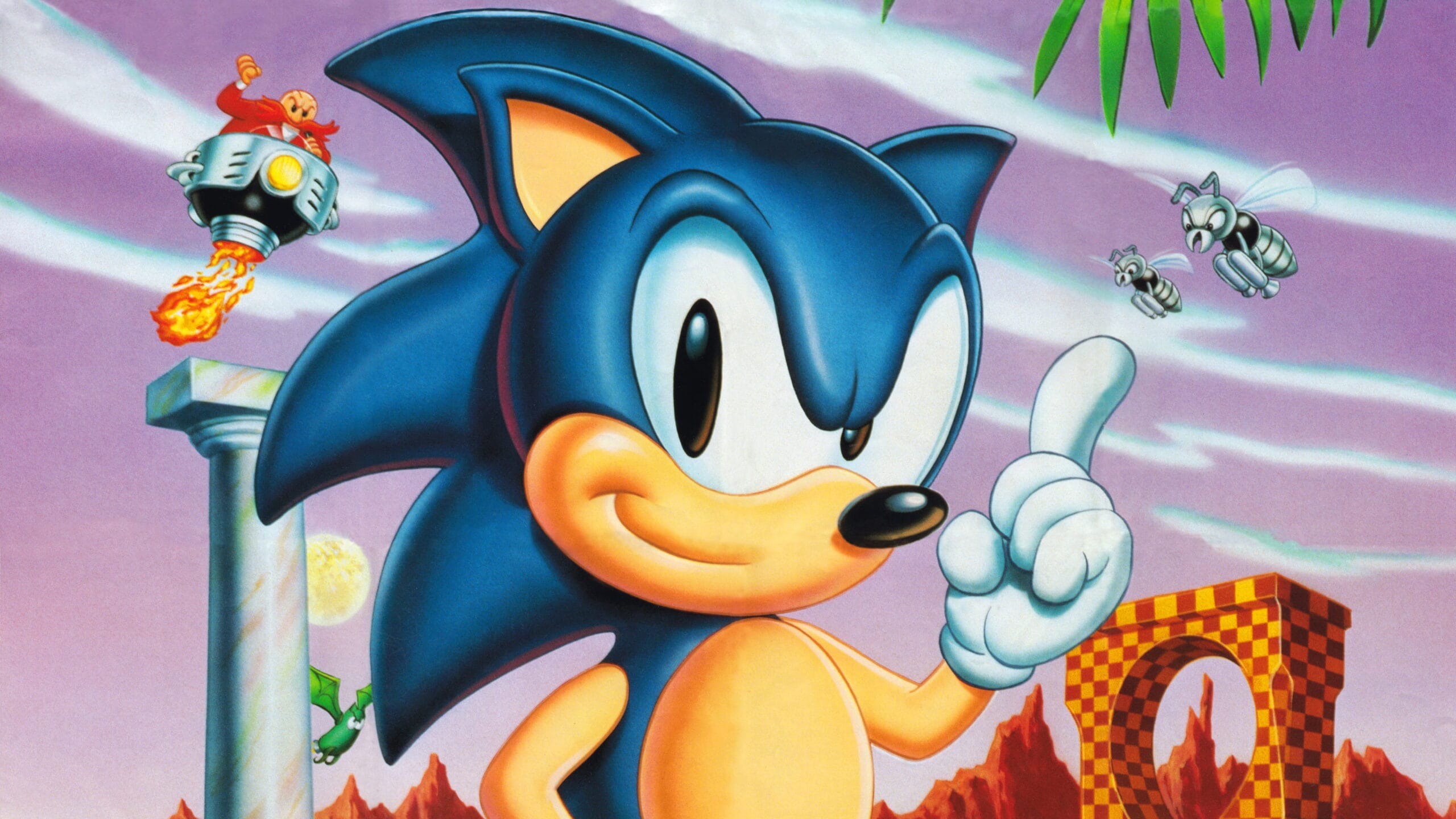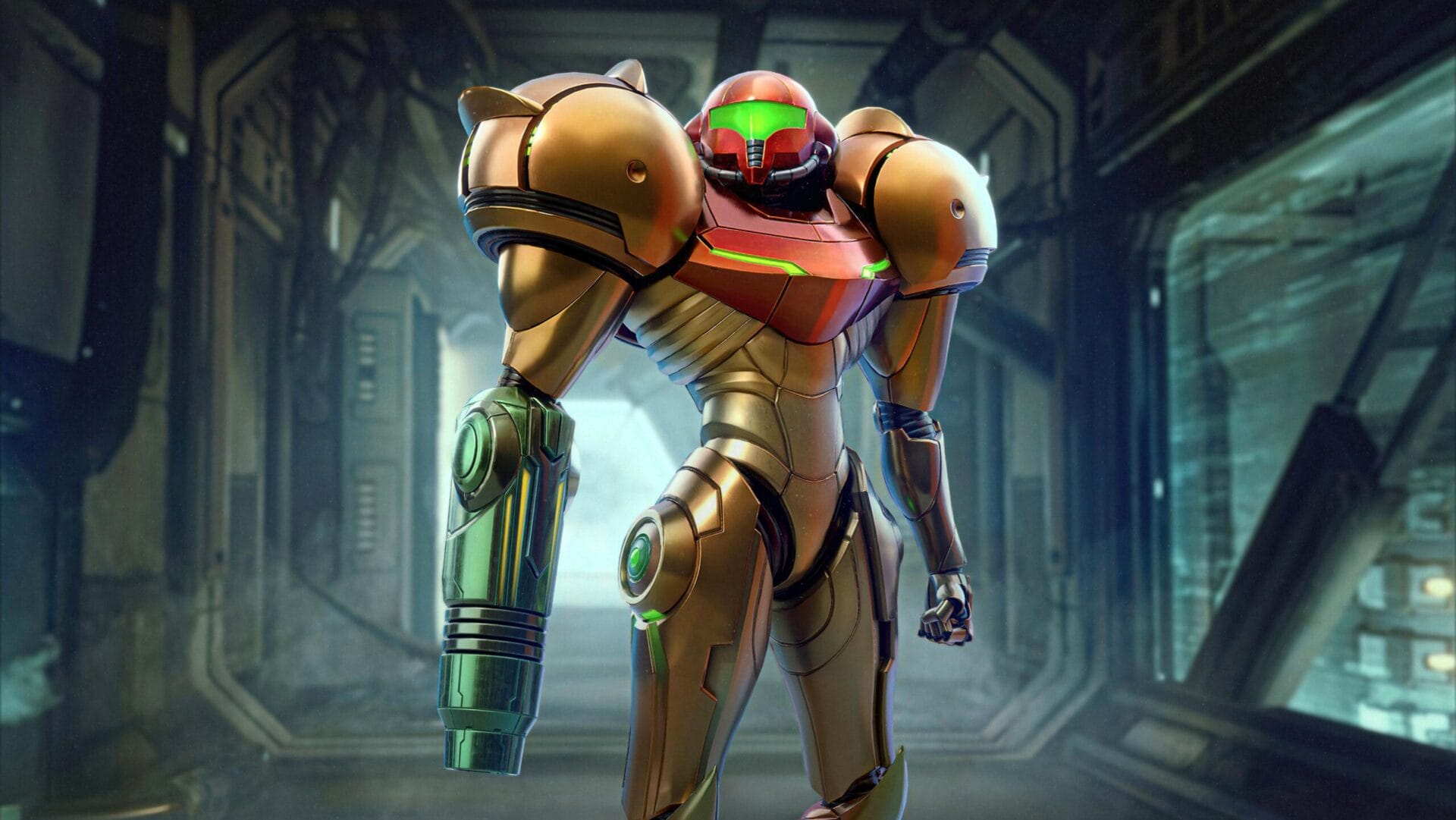The Nintendo DS wasn’t just another handheld—it was a seismic shift in gaming. When it launched in 2004, its clamshell design and dual-screen setup looked like something out of a tech fever dream. A touchscreen? A stylus? A built-in microphone? It defied expectations in an era dominated by traditional button-based play. Critics were skeptical. Gamers were curious. But then, something extraordinary happened.
Within months, the DS exploded in popularity, bridging generations and demographics like no system before it. Kids played Pokémon Diamond & Pearl at recess, while adults tested their mental agility with Brain Age on their morning commute. It wasn’t just a gaming device—it was a social phenomenon, a pocket-sized revolution that made everyone a gamer. And as the sales soared past 150 million units, one thing became clear: Nintendo had struck gold.
But what exactly made the DS such a runaway success? Was it the hardware, the innovative software, or something more? Let’s dive deep into the charisma behind one of gaming’s most beloved handhelds.
Nintendo’s Search for the Next Big Thing
By the early 2000s, Nintendo was synonymous with handheld gaming. The Game Boy line had reigned supreme for over a decade, from the brick-like original to the sleek, backlit Game Boy Advance SP. Pokémon alone had turned millions of kids into lifetime Nintendo loyalists. But while Nintendo had perfected the art of evolutionary upgrades, the gaming world was shifting. Mobile phones were becoming smarter, offering quick-hit gaming experiences without the need for dedicated hardware. Sony, meanwhile, was gearing up to unleash the PlayStation Portable—an ultra-sleek, high-powered device that threatened to redefine portable gaming. The Game Boy name carried weight, but was that enough to maintain dominance?
Nintendo’s first stab at dual-screen gaming wasn’t the DS. Back in the ‘80s, the Game & Watch series had already experimented with the concept. But in the early 2000s, Nintendo revived the idea, testing different prototypes, stylus inputs, and screen placements. The earliest DS mock-ups were rough, but they carried an undeniable potential—one that would let Nintendo step outside the shadow of its own Game Boy legacy and offer something completely fresh. By the time the final design was locked in, it was clear: this wasn’t a Game Boy successor. This was an entirely new beast.
When Nintendo took the stage at E3 2004, the gaming world braced itself for the next evolution of handheld gaming. But no one—not industry analysts, not fans, not even competitors—was fully prepared for what Nintendo was about to unveil. The Nintendo DS, a clamshell handheld featuring two screens stacked on top of each other, was a bizarre and unexpected leap. It was unlike anything else on the market. And that was exactly the point.
Nintendo’s president at the time, Satoru Iwata, confidently declared that the DS would “surprise and delight” players, introducing new ways to interact with games that went beyond traditional button inputs. As the demo reel played, showcasing touch-based controls, voice commands, and even rudimentary 3D graphics, reactions were mixed. Some saw a brilliant stroke of ingenuity. Others saw a gimmick destined to fail.
Dual Screens: A Game-Changer or a Gimmick?
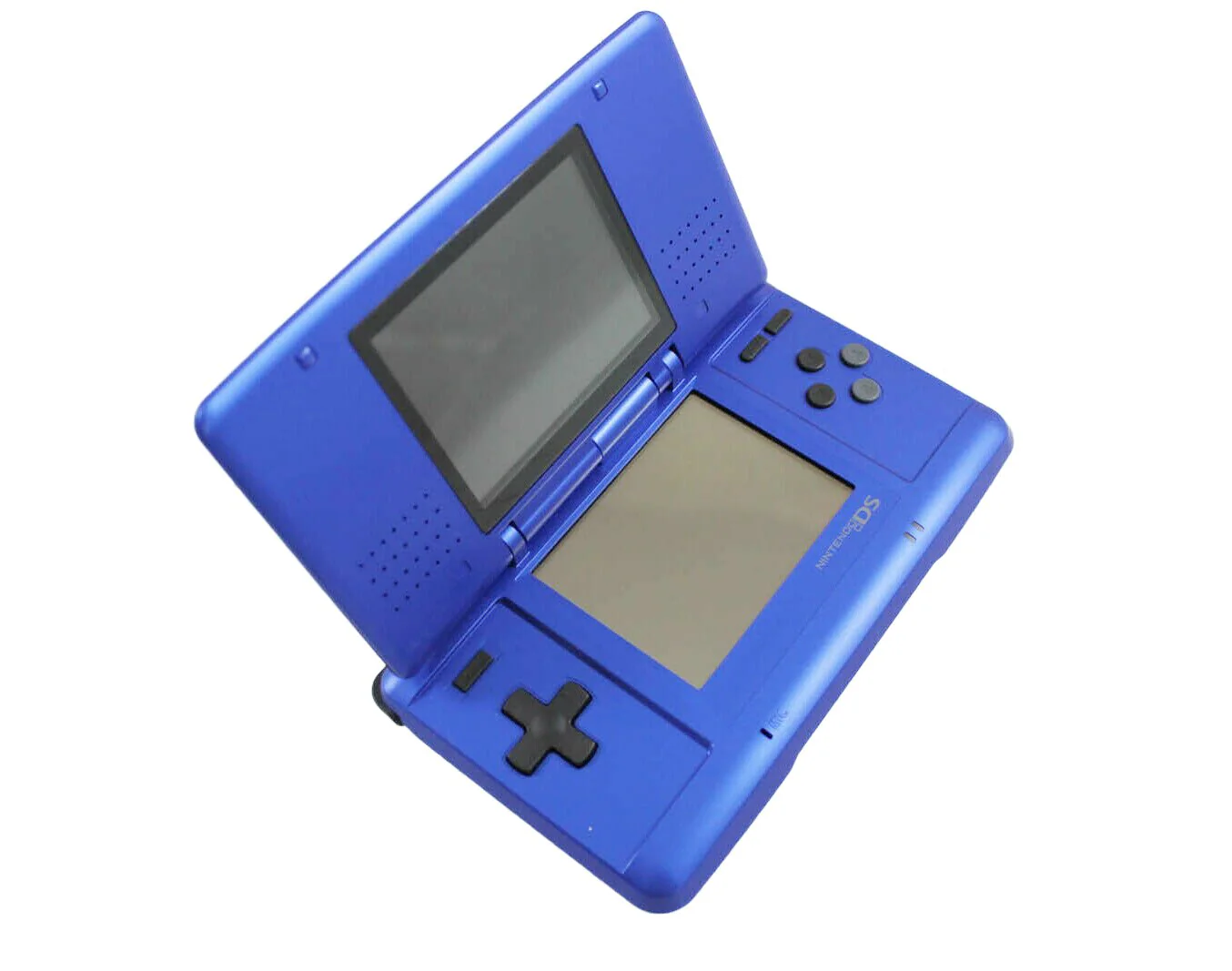
Two screens. Twice the potential—or twice the confusion? When Nintendo first unveiled the DS, its dual-screen setup was met with raised eyebrows. It was an oddity, a deliberate break from the sleek minimalism of the Game Boy Advance. Many fans were opposed to this change at the time.
“Why split the display when a single, high-quality screen would suffice?”
“The touch screen is nothing more than a gimmick.”
“The original GBA design is the best.”
The reveal was polarizing. Many in the industry questioned the practicality of dual screens. Would developers take advantage of the extra display, or would it become an afterthought? Skeptics argued that the bottom touchscreen was a novelty that added unnecessary complexity to gameplay. Traditional handheld gamers worried about the lack of power compared to Sony’s upcoming PSP. Even the design itself, with its chunky silver casing and early 2000s aesthetic, didn’t immediately scream “next-gen.”
Gunpei Yokoi, the legendary mind behind the Game Boy, had long championed the idea of using existing, affordable technology in new and unexpected ways. He believed in maximizing creativity rather than getting lost in the pursuit of cutting-edge hardware. Though Yokoi had passed away before the DS was conceived, his fingerprints were all over it. The dual screens? The touchscreen? The clamshell design? All of it stemmed from his philosophy of doing more with less. The DS wasn’t about graphical horsepower—it was about creating an entirely new way to play.
Nintendo’s choice of name was as unconventional as the system itself. “DS” officially stood for “Dual Screen,” a straightforward nod to its core design. But Nintendo also marketed it as the “Developer’s System,” emphasizing its potential as a creative playground for game makers. It wasn’t just about raw specs—it was about innovation.
Portability has always been at the core of handheld gaming, but the DS took it a step further. The clamshell design wasn’t just a nod to the Game Boy Advance SP—it was a practical, almost indestructible solution to the wear and tear of everyday use. No more scratched screens from keys rattling around in backpacks. No more accidental button presses in transit. Just a clean, foldable design that protected its own hardware.
The hinge mechanism gave it a premium feel, snapping shut with a satisfying click. It also introduced sleep mode, an underrated feature that let players pause their game instantly, no matter where they were. A lifesaver for anyone gaming on the go.
At the time, many assumed the DS was merely a side experiment, not a full replacement for the Game Boy line. But as history would soon show, it wasn’t just another handheld. It was the future of Nintendo’s portable gaming empire. The DS had taken its first steps into the unknown, and the journey was just beginning.
The Library of Games: Quantity Meets Quality
Nintendo’s first-party charm was in full force on the DS, delivering some of the most innovative and beloved entries in its biggest franchises. New Super Mario Bros. revived 2D platforming with a fresh coat of paint, silky-smooth controls, and levels bursting with secrets. Mario Kart DS introduced online play, making it the ultimate test of friendship (or rivalry) as players dodged blue shells from across the globe.
And, of course, Pokémon continued its global dominance. Diamond & Pearl pushed the series into the online era, introducing Wi-Fi trading and battling that expanded the competitive scene beyond link cables and local play. Later, HeartGold & SoulSilver brought back the magic of the Game Boy Color classics with gorgeous enhancements, a pedometer-packed Pokéwalker accessory, and a level of polish that made them two of the most celebrated Pokémon remakes of all time.
While Nintendo’s own games were system sellers, third-party developers ensured the DS had variety and staying power. The console wasn’t just a haven for platformers and RPGs; it became a breeding ground for experimentation.
Nintendo bet big on touch controls, and the DS delivered in ways no one expected. The stylus wasn’t just a gimmick—it was a gateway to an entirely new way of playing. WarioWare: Touched! transformed rapid-fire minigames into chaotic, stylus-slashing mayhem.
Then there were the RPGs that redefined interactivity. The World Ends With You made players tap, swipe, and scribble to unleash stylish, screen-clearing attacks. Drawn to Life lets players create their own protagonists from scratch, sketching their heroes into existence before guiding them through colorful platforming levels. Even adventure games like The Legend of Zelda: Phantom Hourglass ditched button inputs entirely, making players navigate dungeons, solve puzzles, and even draw their own map routes using the stylus alone.
Nintendo didn’t just introduce touch controls—it made them indispensable. The stylus turned gaming into a tactile, personal experience, bridging the gap between the digital and the physical like never before.
The DS didn’t stop at touch controls—it listened, too. Built-in voice recognition and microphone features opened the door for truly interactive gameplay, making players feel like they were part of the game world. Phoenix Wright: Ace Attorney let players yell “OBJECTION!” into the mic during courtroom battles, adding a layer of immersion that made shouting at fictional prosecutors feel oddly satisfying.
For a company that was famously slow to embrace online gaming, the DS marked a turning point. With the introduction of Nintendo Wi-Fi Connection, players could finally compete, trade, and interact beyond their immediate surroundings.
Games like Mario Kart DS brought online multiplayer to the masses, letting players race against opponents worldwide for the first time in a Nintendo kart racer. Pokémon Diamond & Pearl introduced the Global Trade System (GTS), forever changing how trainers completed their Pokédex by allowing them to trade with people they’d never even met.
Even titles like Metroid Prime: Hunters and Animal Crossing: Wild World tapped into Wi-Fi play, creating competitive and social experiences that were groundbreaking for handheld gaming. Sure, the friend code system was a bit clunky, and voice chat was limited, but this was Nintendo’s first real step into the online arena. It was the beginning of something bigger—laying the groundwork for what would eventually become the Nintendo Network and Nintendo Switch Online.
The DS wasn’t just innovative; it was fearless. It introduced new ways to play, new ways to interact, and new ways to connect—all in a pocket-sized package that felt ahead of its time.
Bridging the Casual and Hardcore Gaming Worlds
Before the Nintendo DS, gaming often carried a stigma—it was seen as a hobby for kids, teens, or the dedicated few who poured hours into RPGs and shooters. But the DS changed the narrative. With Dr. Kawashima’s Brain Training (or Brain Age in the West), Nintendo cracked the code for an entirely new audience. The promise was simple: a few minutes a day of mental exercises to keep your brain sharp. It wasn’t just marketing fluff—people took it seriously. Seniors, professionals, and other non-gamers suddenly had a reason to pick up a DS. It blurred the line between entertainment and self-improvement, a strategy that would later pave the way for the mobile gaming explosion.
Titles like My Japanese Coach and English Training turned language acquisition into an interactive experience, while Professor Layton made problem-solving feel like a thrilling mental workout. The latter, in particular, became a phenomenon. With its blend of whimsical storytelling and devious puzzles, Professor Layton and the Curious Village turned brain teasers into a narrative-driven adventure, something no other handheld had attempted at the time.
Then came Nintendogs. It wasn’t about racking up high scores or grinding for XP—it was about connection. You didn’t just tap buttons to interact with your virtual pup—you actually called its name, trained it with voice commands, and blew into the microphone to toss bubbles or dry its fur after a bath. During my time on an airplane, I remember seeing a young girl taking care of her virtual pup on her DS. It was undoubtedly the Tamagotchi of the mid-2000s.
While the DS embraced a casual-friendly approach, it never abandoned the hardcore audience like some fans believed. In fact, it became a powerhouse for RPGs and strategy games, genres that thrived on its dual-screen setup. Fire Emblem: Shadow Dragon brought back classic strategy elements, while Advance Wars: Dual Strike added new layers of tactical depth.
For many, the DS became a haven for deep, content-rich experiences. The casual boom may have defined its mass-market appeal, but for those who wanted dozens—if not hundreds—of hours of playtime, the DS never disappointed.
The DS Lite: A Mid-Generation Refresh Done Right
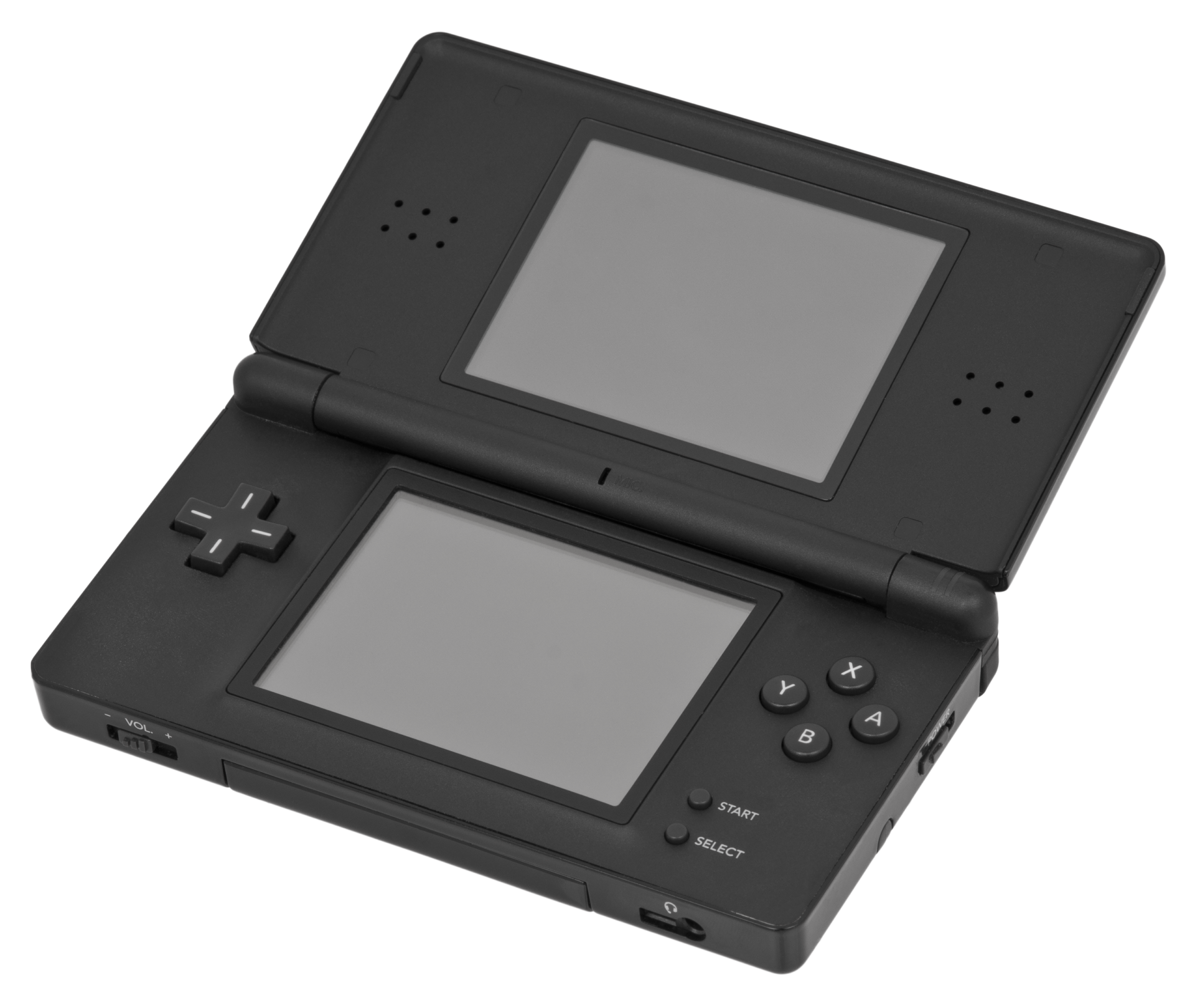
By 2006, the Nintendo DS had already proven itself as a juggernaut in the handheld gaming space. But Nintendo wasn’t content with just coasting on its success. Enter the DS Lite, a masterclass in hardware refinement that took everything great about the original model and made it better—sleeker, slimmer, and undeniably more stylish.
Gone was the chunky, somewhat toy-like exterior of the launch model. In its place was a device that felt premium, with a smooth, Apple-like gloss and a compact form factor that made it far more pocket-friendly. The DS Lite wasn’t just an upgrade—it was a statement. It told gamers, “This isn’t just a kid’s toy; this is a must-have piece of tech.”
But it wasn’t just aesthetics. The new backlit screens were a revelation. Where the original DS felt a bit dim and washed out, the Lite’s vibrant display made colors pop and details shine. Games that once looked passable now looked stunning. Combine that with a more comfortable grip, a refined stylus, and improved battery life, and it was clear: the DS Lite was a runaway success.
Suddenly, the DS wasn’t just for hardcore Nintendo fans. The Lite’s sleek design appealed to casual gamers, parents, and even young professionals who might have overlooked the original. It became the kind of gadget people wanted to be seen with, a device that transcended traditional gaming demographics.
It was a textbook example of how to do a mid-generation refresh right. No unnecessary gimmicks, no alienation of existing users—just a better, more refined version of an already-beloved system. And as history would later prove, Nintendo had just set the stage for an even greater expansion of the DS phenomenon.
The DSi and DSi XL: Experimenting with the Future
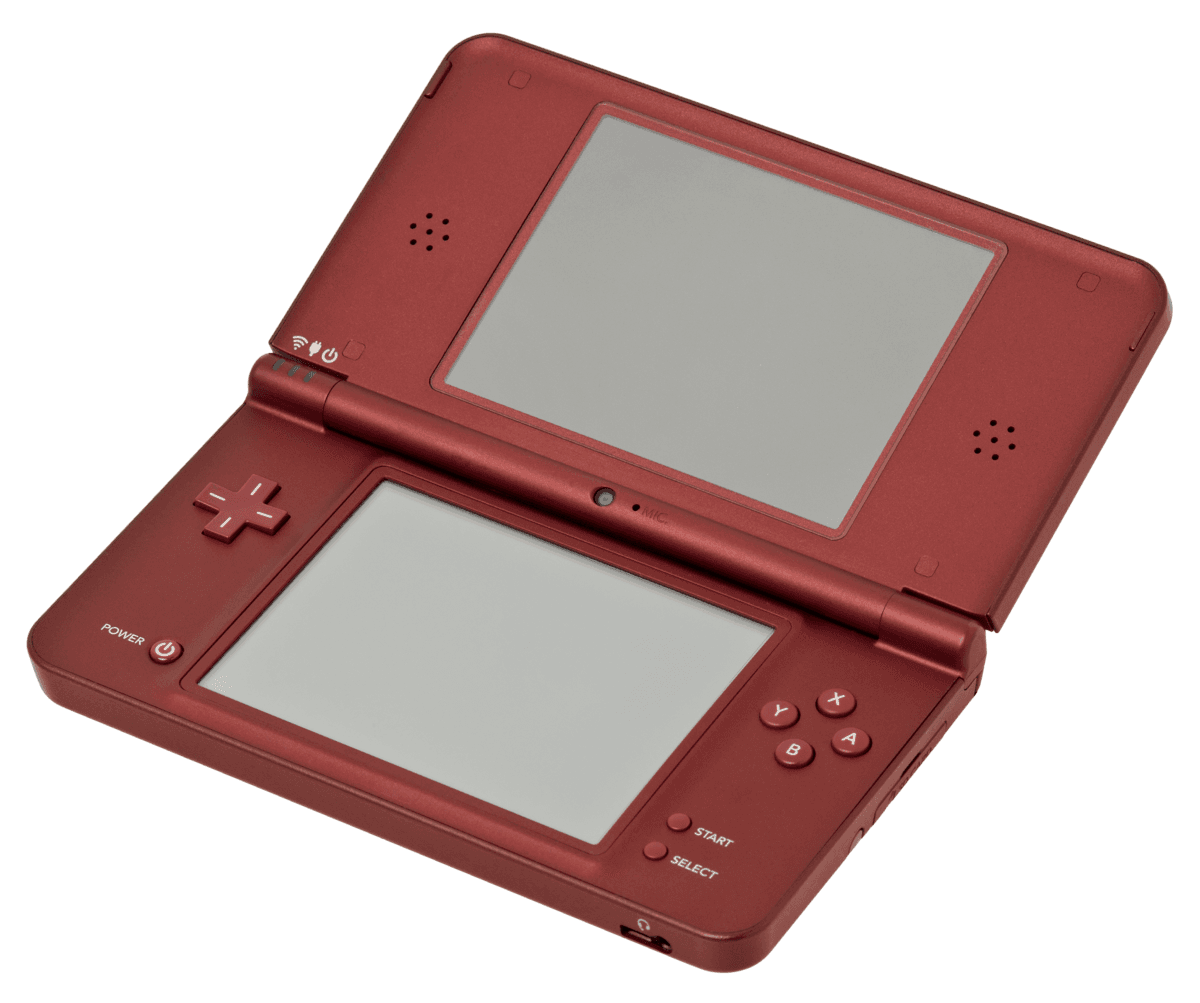
By 2008, the DS had already cemented itself as a cultural phenomenon, but Nintendo wasn’t done iterating. Enter the Nintendo DSi, a sleeker, slightly more powerful upgrade that pushed the handheld into new digital territory. The biggest shift? The DSiWare Shop—Nintendo’s first real dive into digital game distribution.
Long before the Nintendo eShop became a household name, the DSiWare Shop offered gamers a taste of a download-driven future. Suddenly, bite-sized games, quirky indie experiences, and even small-scale Nintendo exclusives were just a few taps away. It was a bold experiment, laying the groundwork for the digital-first strategy Nintendo would later perfect on the 3DS and Switch. Titles like Mighty Flip Champs! and Shantae: Risky’s Revenge showcased how smaller-scale projects could thrive in a digital storefront, while apps like the Flipnote Studio fostered creativity and social sharing before the rise of smartphones.
But the shift to digital came with a cost. In an effort to push online downloads, Nintendo removed the Game Boy Advance cartridge slot from the DSi. For some, this was a deal-breaker—after all, backward compatibility had been a major selling point of the DS family. It also affected games that used the GBA slot for accessories, such as Guitar Hero On Tour and Tony Hawk Motion. But for Nintendo, it was a necessary step toward a more forward-thinking handheld ecosystem.
Nintendo saw an opportunity to position it as more than just a gaming console—they wanted it to be a multimedia gadget. So, they loaded it up with front and rear-facing cameras, basic photo-editing software, and even a music player with quirky sound manipulation effects.
Compared to the high-powered smartphones that were just starting to dominate the market, these features felt a bit underpowered. The cameras, while fun, weren’t exactly high resolution, and the music player lacked MP3 support (instead opting for AAC files). But in typical Nintendo fashion, it wasn’t about competing with Apple or Sony—it was about expanding the ways people could interact with their handheld device.
And then there was the DSi XL—a supersized version of the system that delivered massive screens and a more premium feel. Aimed at older players, casual gamers, and those who simply wanted a more comfortable experience, the XL proved that sometimes, bigger is better. The larger display made text easier to read, colors more vibrant, and touchscreen gameplay more immersive.
The DSi and DSi XL weren’t just minor hardware refreshes; they were stepping stones to the future. Digital storefronts, multimedia integration, and larger-screen options—all of these would become standard features in Nintendo’s later handhelds. Even if they weren’t as revolutionary as the original DS or as ubiquitous as the Lite, they played a crucial role in Nintendo’s evolution toward the 3DS era.
The Marketing That Made It a Phenomenon
Nintendo didn’t just market the DS to gamers—they marketed it to everyone. Kids, teenagers, parents, and even grandparents found themselves drawn to the handheld, thanks to a strategy that transcended traditional gaming demographics.
Retailers embraced this wider appeal. It wasn’t uncommon to see DS kiosks in toy stores, electronics retailers, and even department stores. The device wasn’t just for the usual gaming crowd—it was for anyone who wanted to have fun, learn, or engage in a new way.
Nintendo didn’t rely solely on game quality to sell the DS—it used star power. Marketing campaigns roped in big-name celebrities to make the device look trendy and accessible. In Japan, even cultural icon Shigeru Miyamoto himself appeared in ads for Brain Age, demonstrating its ability to keep the mind sharp. In the U.S., stars like Beyoncé, Nicole Kidman, and Patrick Stewart were seen enthusiastically playing the DS, reinforcing the idea that gaming wasn’t just for kids anymore.
Let’s not forget the Japanese Mario Kart DS commercials, which were so memorable and effective that they became a popular meme in the gaming community. Nintendo also leaned into emotionally driven marketing. One of the most effective ad campaigns was the “Touching is Good” tagline, a subtle but clever way of emphasizing the innovative touchscreen mechanics while also making the DS feel intimate and interactive.
Beyond the massive marketing push, the DS thrived on word of mouth. A single copy of Nintendogs could turn one player into a walking advertisement—showing off adorable virtual pets to friends, who would inevitably want a DS of their own. The social nature of DS games made it easy for people to introduce others to the console organically.
Multiplayer experiences like Mario Kart DS and Pokémon Diamond and Pearl capitalized on this, offering seamless wireless play that made group gaming sessions effortless. The PictoChat feature, though simple, gave kids and teenagers another reason to carry their DS everywhere. And with the rise of Wi-Fi gaming, players could battle, trade, and connect globally, creating communities that spread the DS’s popularity even further.
Nintendo’s marketing strategy wasn’t just about selling a product—it was about selling an experience. Whether through celebrity endorsements, universally appealing games, or the sheer power of social connection, the DS became more than a handheld. It became a cultural mainstay, a device that everyone, regardless of age or gaming background, wanted to be a part of.
The Legacy of the Nintendo DS
Numbers don’t lie—the Nintendo DS wasn’t just a success, it was a juggernaut. Selling over 154 million units worldwide, it remains the second best-selling console of all time, trailing only behind Sony’s PlayStation 2. But how did a quirky, dual-screened handheld achieve such an astronomical milestone?
It wasn’t just one factor—it was a perfect storm of innovation, accessibility, and smart marketing. The DS transcended traditional gaming markets, appealing to both hardcore and casual players. Parents bought it for their kids. Grandparents picked it up for Brain Age. Teens took it to school for Pokémon battles and Mario Kart showdowns. The DS became a ubiquitous companion, slipping into backpacks, purses, and pockets around the world.
Nintendo’s aggressive global rollout also played a key role. The DS was a worldwide event, launching in Japan, North America, and Europe within months of each other. It didn’t just sell well in gaming strongholds—it thrived in emerging markets, finding audiences in places where consoles traditionally struggled. Affordability was another factor. Compared to home consoles or high-end gaming PCs, the DS was a relatively inexpensive way to experience top-tier gaming.
Its momentum never really slowed, either. Iterations like the DS Lite, DSi, and DSi XL kept the hardware fresh, giving new adopters reasons to jump in while keeping the existing audience engaged.
The Nintendo DS wasn’t just a moment in gaming history—it was a turning point. It redefined how people interacted with handheld consoles, and its influence stretched far beyond its own generation. Without the DS, there would be no Nintendo 3DS, and perhaps even the Nintendo Switch would have looked very different.
When the 3DS launched in 2011, it was clear that Nintendo was building on the DS’s foundation. The dual-screen setup remained, the clamshell design persisted, and backward compatibility with DS titles ensured a smooth transition for millions of players. The addition of glasses-free 3D was a bold step forward, but at its core, the 3DS was an evolution of what made the DS great—versatility, innovation, and an expansive library of games.
Then there’s the Switch. While its hybrid design may seem like a departure, look closer and you’ll see the DS’s fingerprints all over it. The emphasis on touchscreen interactivity, on-the-go gaming, and games that appeal to both casual and hardcore players all trace back to the DS’s legacy. Even the Joy-Con’s motion and IR features echo the DS’s philosophy of incorporating unique input methods to enhance gameplay.
Nintendo took the lessons of the DS and applied them to future generations, ensuring that the innovation it sparked continued well into the modern era.
Look around—touchscreens are everywhere. Smartphones, tablets, and even modern gaming devices owe a debt to the DS’s early experimentation with touch-based interaction. When Nintendo introduced stylus-driven gaming, it was a radical departure from traditional button-based controls. At the time, few could have predicted how integral touch input would become to the way we play games today.
Titles like Elite Beat Agents, Trauma Center: Under the Knife, and Hotel Dusk: Room 215 showcased how touchscreens could provide deeper, more immersive gaming experiences. While mobile gaming exploded in the 2010s, many of its core gameplay mechanics were pioneered on the DS. Swiping, tapping, and dragging weren’t just born from smartphone interfaces—they were refined through Nintendo’s dual-screen handheld.
Even modern console gaming has embraced the touchscreen revolution. The Switch’s screen allows for tablet-style navigation, and PlayStation and Xbox controllers now incorporate touch-based features in their designs. The DS wasn’t just ahead of its time—it helped shape the entire trajectory of gaming technology.
Why the DS Remains One of the Most Beloved Consoles of All Time
Few consoles inspire nostalgia quite like the Nintendo DS. It wasn’t just a gaming device—it was a cultural phenomenon. From the countless hours spent catching Pokémon to the late-night PictoChat sessions with friends, the DS wasn’t just a console—it was a companion.
What makes it so beloved? Its accessibility. It didn’t matter if you were a seasoned gamer or someone who had never picked up a console before—the DS had something for everyone. Whether you were training your brain, adventuring through Hyrule, or designing clothes in Style Savvy, it felt like a system tailored to you.
Then there’s its sheer breadth of experiences. It’s rare for a console to balance massive mainstream hits with niche cult classics, but the DS effortlessly pulled it off. Its library remains one of the most diverse and impressive in gaming history, with experiences that still hold up today.
Even years after its production ended, the DS maintains a dedicated fanbase. Enthusiasts continue to hunt for rare gems, replay beloved classics, and celebrate its legacy. It wasn’t just another console—it was a revolution, and its impact still echoes through gaming today.

